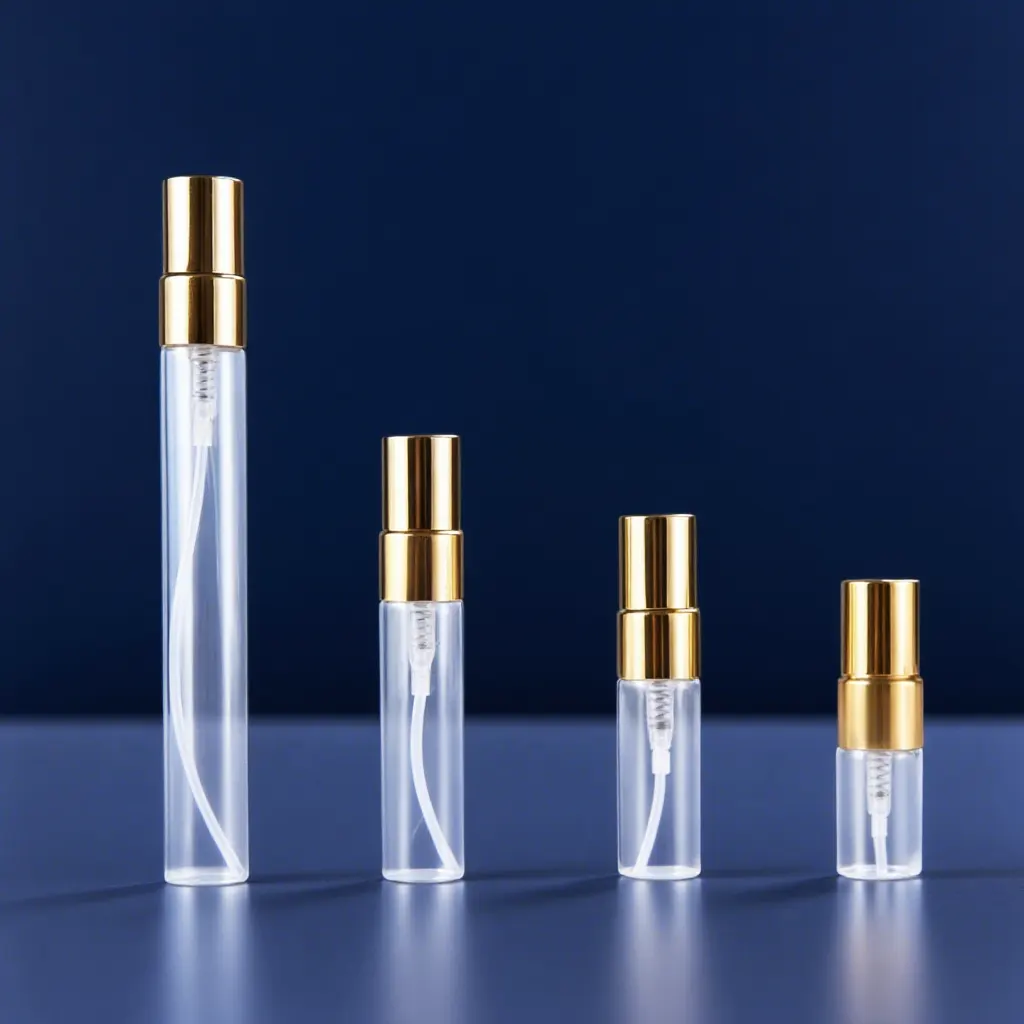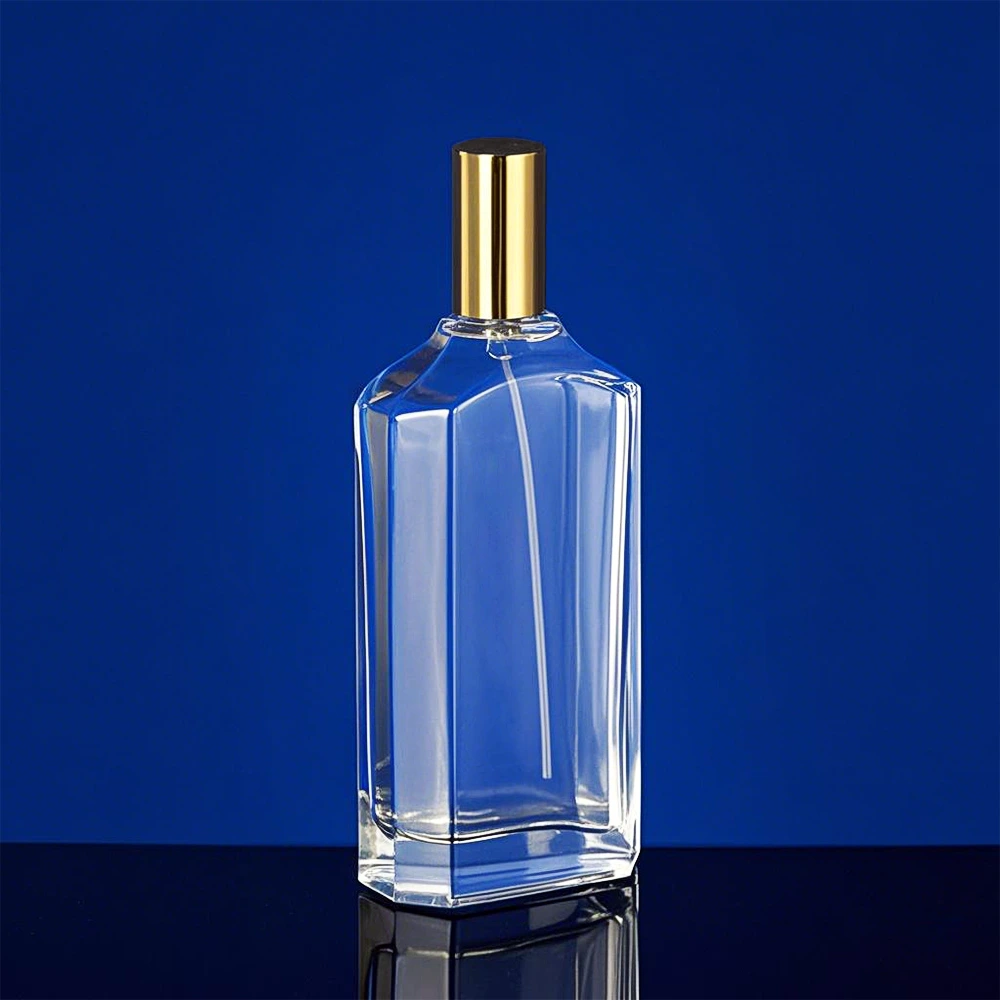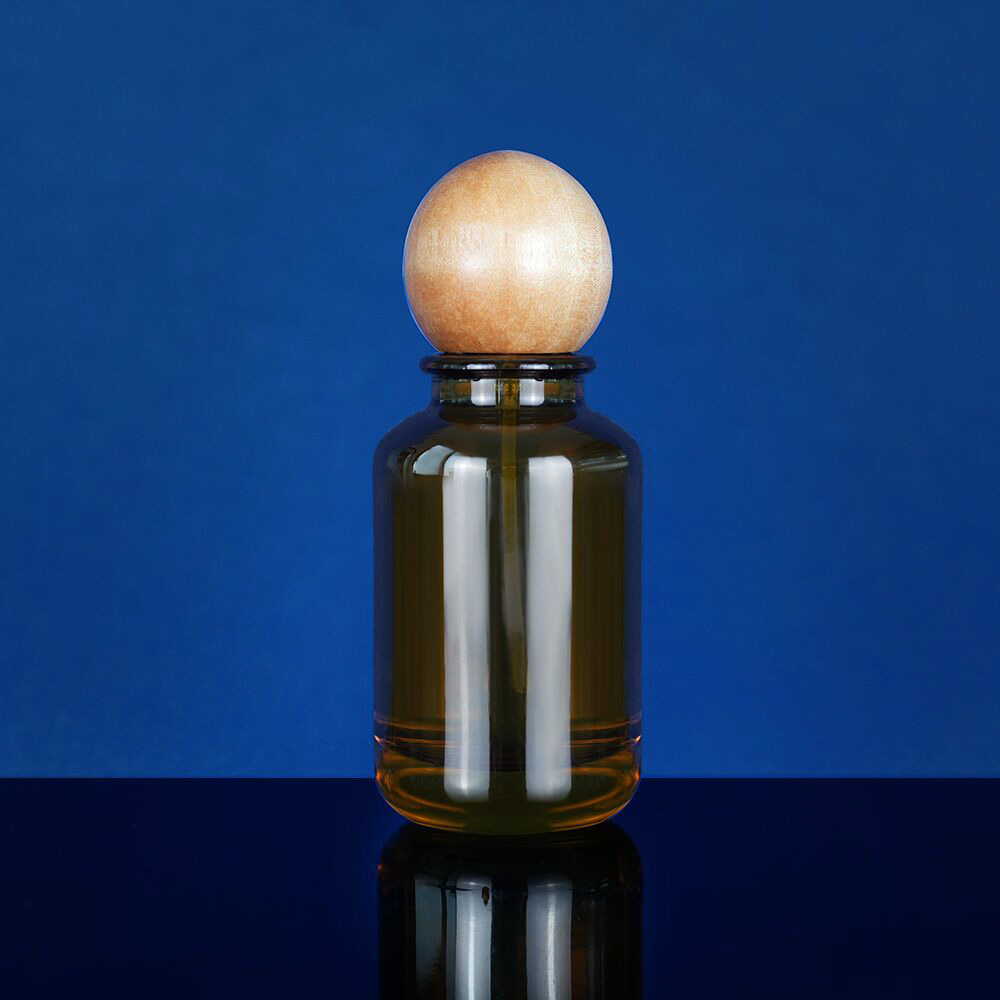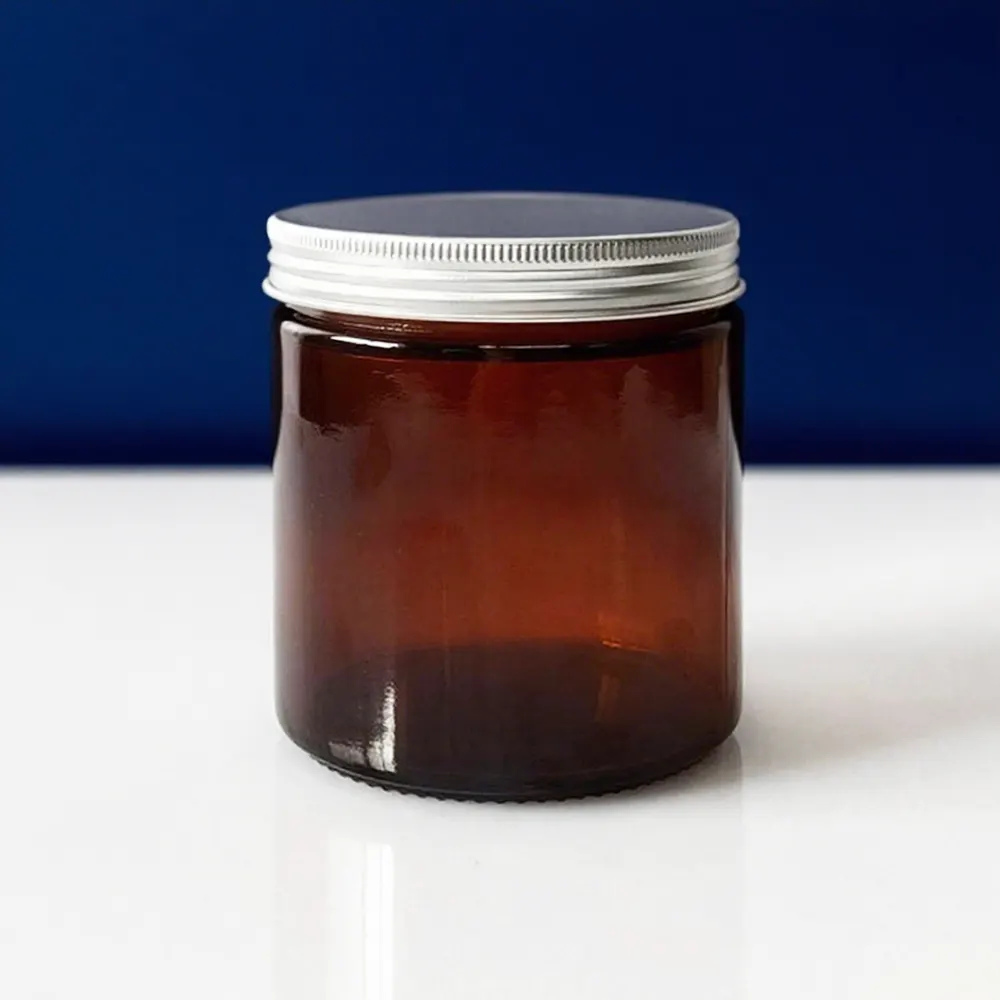
Cullet (Recycled Glass):
Indholdsfortegnelse
Minor additives achieve desired optical and aesthetic properties:
Decolorizers: VesselluxeFining Agents:
Remove bubbles and impurities from melted glass, increasing clarity.
Colorants: Specific chemical compounds add desired tint; Formulations are often owned.
Lead Oxide:
Historically, the lead oxide has increased crystal glass density, durability and refractory index. Modern formulation uses barium or zinc oxide as an option.
- 3.3. Batch Preparation and HomogenizationAccurate batching, combination of materials, is important for a homogeneous glass batch for melting.
- Homogenization Techniques: Optimal batch homogeneity is important for quality glass and furnace efficiency. Intensive mixer (e.g., Eirich) produce highly homogeneous batch.
- Advanced Pre-heating Technologies: Batch and Callet Preheating System (e.g., “Raining Bed Batch/Cullet Preheater”) furnace for more than 1000 ° F (538 ° C), recovery of significant energy. These systems report 12-20% energy savings by reducing fuel or increasing production.
4. Glass Melting and Primary Forming Processes
After the preparation of the batch, the glass undergoes melting high temperature and forms to form the original custom shape of the bottle.
- 4.1. Glass Melting The mixed batch is heated to 1200 ° C-1600 ° C in a furnace, which becomes a molten liquid.This is then refined to get the optimal “working viscosity” to remove and shape the bubbles. Temperature and viscosity are paramount to high quality bottles, which affect the thickness and integrity of the wall. An optimal Gob 1000 dPa·s viscosity, often prefer temperatures below 1200 ° C with operators.
- 4.2. Primary Forming Techniques Bottle shaping occurs via several key methods:
- Blow-and-Blow Process: Used for narrow-necked bottles, a molten gob gravity is fed into an empty mold where compressed air makes the neck and a cross. The carncy is then reversed, heated, and is blown into its final shape. Skilled, but less skilled in complicated shapes.
Press-and-Blow Process:
Widely adopted to complex shapes, complex designs and wide mouth bottles. A molten gob is pressed to make a perine with a solier in a mold, then a blow is transferred to the mold and blown into size. It provides better glass distribution control, enables high quality with complex design and minimal defects.
- Artisanal Glassblowing: A manual technique where artisans shape melted glass without molds, are ideal for unique, artistic, bespoke perfume bottles. Luxury brands give it importance to unique shapes, complex patterns and custom embossing, reflecting prestige. Labor-intensive, it gives results in small amounts and high costs, with adding flaws.
- 4.3. Challenges in Dimensional Accuracy for Complex Geometries The manufacture of highly odd or organic perfume bottles challenges dimensional accuracy and structural integrity. Complex forms cause uneven weight, production instability and inconsistent wall thickness. Sharp angles or intricate contours increases the deformation/cracking risk during cooling. It is difficult to obtain innocent surfaces without seam or mold marks, often required automatic polishing and manual finishing. The accuracy in the neck finish is important to prevent vacuum integrity and leakage.
5. Annealing, Cooling, and Initial Quality Inspection
After formation, custom glass perfume bottles undergo significant post-formation processes for structural integrity and durability. glas parfumeflasker Annealing is a controlled cooling process that reduces internal stress from rapid cooling. This allows molecular shifts and viscous flows, between analing and strain points, transforms brittle glass into a durable, stable product,preventing spontaneous breakage,and enhancing resistance to mechanical and thermal shocks.
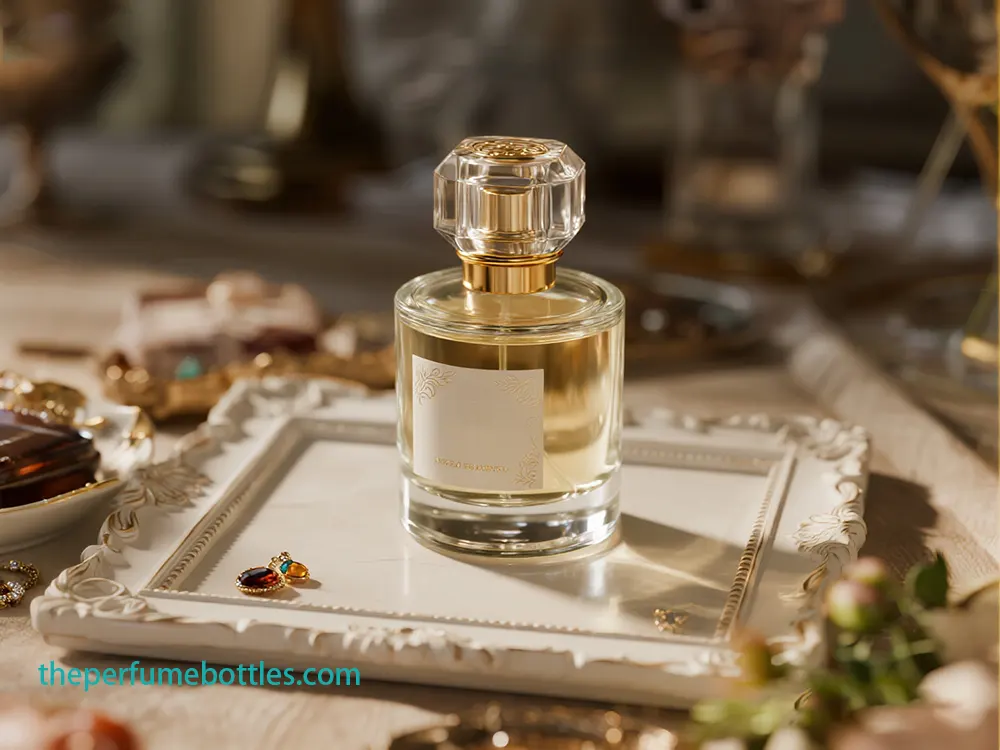
Få gratis prøver
Annealing is at annealing annealing temperature,usually 454–482 ° C (or 510–550 °C for soda-lime glass). Under the stress point, stress is permanently fixed.
Impact of Composition and Thickness:
- The optimal anelying depends on the structure of the currency, thermal expansion and the thickness/size of the bottle. Thick or complex geometry requires longer holding and slow cooling to stay in equal stress. Stress and Structural Relaxation:
- Glass exemption includes stress exemption (reduced residual stress) and structural relaxation (changes in imaginary temperature affecting viscosity). Stress exemption is generally intensified. Lehr Design:
- Annealing occurs in a temperature-controlled Lehar, a multi-field oven. Multi-zone heating and forced convection is important for lead design, efficient, uniform annealing. The research focuses on energy-efficient lehrs and optimal sensor placements.Annealing Quality Metrics:
Annield glass avoids thermal shock, impact and internal pressure. Poor Annield Glass suffers from microcrack and spontaneous fracture. The level of internal stress is measured with stress meters, with specific recommendations for bottle types(e.g., ≤4 for beer, ≤2 for lightweight).
5.2. Advanced Residual Stress Measurement
- For rigorous QC, residual stress is measured using photolesticks: Integrated Photoelasticity:
- Calculates surface tension and delivery for axisymmetric containers.Modified Integrated Photoelasticity, Scattered Light Method, Photoelastic Tomography:
- Complex 3D stress fields are used for non-axisymmetric custom perfume bottles to determine the field.Polarimetry is a related technique. 5.3. Toughening Processes Beyond Standard Annealing
- Beyond standard annealing, the glass can be quite strict to increase the strength significantly:Thermal Toughening (Tempering):
Glass heating above 600 ° C and rapid cooling makes compressed surface forces and internal stress, which makes it 4-5 times stronger and shatter into small, harmless pieces.
Heat Strengthening (HS):
- Less intense, HS glass makes ~ 2 times stronger than the temporing, which breaks into larger pieces.Chemical Toughening (Ion Exchange):
- Immerseing the antiald glass in a melted salt bath replaces small surface ions with large people, creating a compressed surface layer that increases strength and impact resistance. Heat Soaking:
A post-toughening process, soaking heat accelerates nickel sulfide expansion, breaks defective panels in a controlled environment.
6. Advanced Customization: Decoration and Surface Finishing
The aesthetic appeal of custom glass perfume bottles is greatly enhanced by diverse decorations and surface finishing, converting functional containers into art.
6.1. Screen Printing
Screen printing (silkscreen) is a versatile, durable method for vivid, accurate designs. Modern advancements include:
Sustainable Inks:
- UV reactive, metal, and advanced permanent organic ink (e.g., BPA-free Ultra Glass LEDGF) provides high brightness and energy savings during UV/LED curing .Arganic ink also provides high scratches and chemical resistance.Multi-Color and Tactile Effects:
- Capable to complex multi-colored patterns. “Relief printing” produces clear, adaptable touch effects through thick-film coatings.6.2. Hot Stamping
- Hot Stamping (foil printing) finishes luxurious, durable metallic finishes: Luxurious Sheen:
Transfer metallic foils (gold, silver, custom colors) or using heat and pressure make pre-dry ink, a high-end, often holographic or embossed look.
Durability and Versatility:
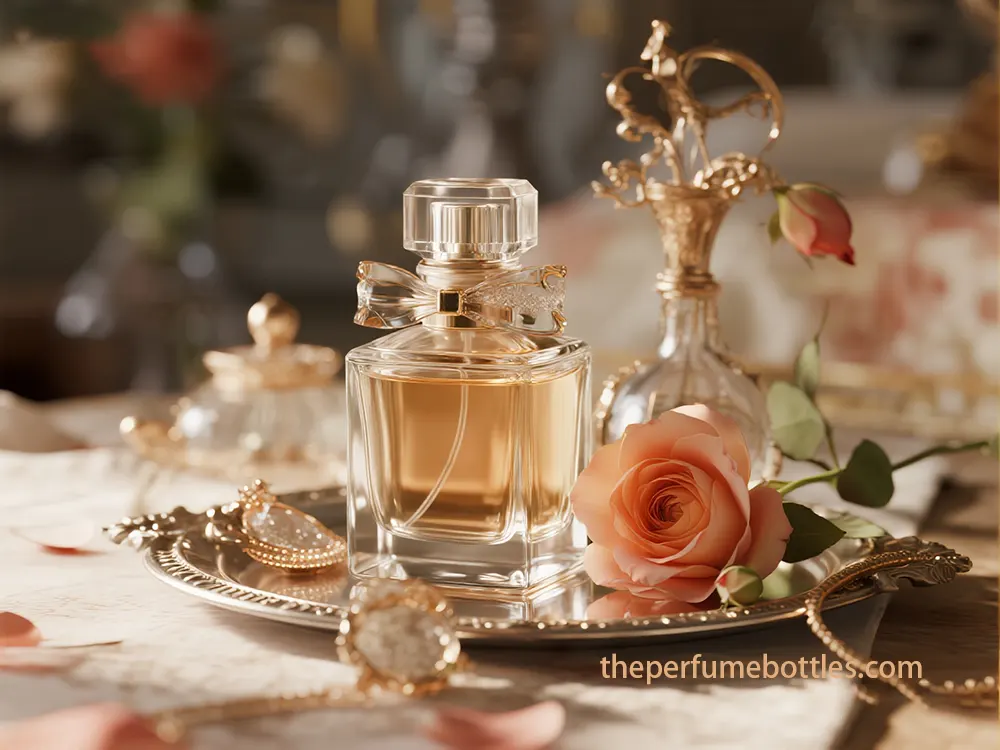
Få gratis prøver
6.3. Frosting and Acid Etching
These techniques provide diverse text and privacy effects:
Acid Etching:
Uses corrosive chemical chemicals such ashydrofluoric acid for the presence of a smooth, translucent, cloudy appearance, offers a fingerprint- and moisture resistant surface.
- Sandblasting: Bombing the surface with abrasive particles attains a thick texture.
Concerns: Traditional acid carriage causes security and environmental challenges due to corrosive chemical chemicals and pollution, reduces cost increase and availability. - 6.4. Spraying Techniques Sophisticated spraying provides extensive beauty and functional adaptation:
- Diverse Finishes: Includes full opaque, translucent, gradient, metal, soft-tutch, crackle and glitter effects.
- Gradient Spraying: The color controls the color density for accurately uninterrupted infections, enhances personality.
Soft-Touch Coatings:
Create a matte texture like a velvet or suede, increasing the touch experience and increasing the notion of the brand. Consumers pay a premium for such finish. These polyurethane-based coatings provide excellent chemical and scratch resistance.
- 6.5. Advanced Metallization PVD and sputtering provide high end finish:
- Mirror-like Finishes: Vacuum coating (PVD) applies ultra-sloping metal layers (~ 100 nm) on glass, which makes finishes, mirrors such as mirrors that enhance aesthetics and provide UV protection.
Magnetron Sputtering:
A highly efficient PVD technique, magnetron sputtering ensures accurate metal application with good layer thickness, high density, low roughness and strong adhesion.
- Sputtering and transparent liquid metallorilization innovation are recurrence, offer low energy consumption and ensure the recycling of glass.6.6. Decal Application
- Intricate decal applications and 3D bulging stickers provide detailed adaptation: Detailed Designs:
- Decal transfer includes printing designs on special paper/film and apply them to glass using heat and pressure, enabling comfortable, wide, multi-colored designs. 3D Embossed Stickers:
- A rapidly growing market, 3D embossed stickers provide tactile discrimination; 78% luxury consumers assisted the embossed texture with premium quality. Diagital embossing setup reduces the cost by 40%. Durability Standards:
Require ISO 15378-certified suppliers, specific peel adhesion, friction, water and temperature resistance tests are required.
6.7. Laser Engraving
Laser engraving provides high precision, permanent, adaptable decoration:
Permanent and Precise:
- Uses a laser beam to design ech or carving on the glass surface, makes permanent, accurate layout with fine details and unique textures, often a frost effect.Non-contact process reduces the risk of rupture, save up to 80% processing time on sandblast, and provides more flexibility in typography and design positioning.
- 6.8. Digital Printing Digital printing directly on glass provides high details, speed and adaptation:
Exceptional Detail:
Enables direct application of digital images with broad color surge, photorialistic quality and complex patterns.
- Rapid Customization: Cost -effective, eliminating the physical screen for low runs or niche collection.
- UV-Curable Inks: usually used, UV-curable inks provides high flexibility, full-colored capabilities and durability. More environmentally friendly due to low waste and less harmful emissions. The effect can be created by manipulating white layers.
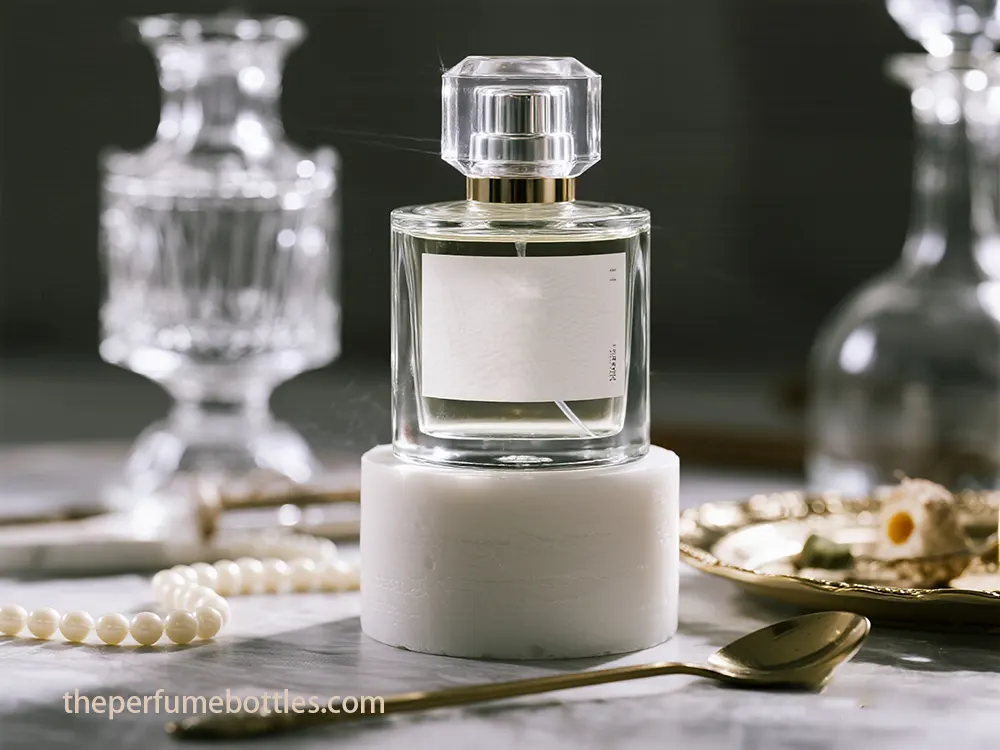
Få gratis prøver
Haptic Coatings:
Create specific touch sensations (e.g., soft-feel, velvety, rubbery, silky, textured) that enhance sensory experience and promote emotional connections.Modern formulations offer excellent chemical and scratch resistance, environmentally friendly, water-based and trends towards UV-Ilas options.
- Smart Materials and Embedded Electronics: Emerging innovations include “Smart Glass” (clear/frosted switching) and thermocromic coatings, which reveal patterns with temperature changes.
- UV Protection Coatings: Coatings such asLumi Coat absorb harmful UV rays, protect perfumes and aroma, supporting “clean beauty” yogas by stabilizing molecules.
- 7. Comprehensive Quality Control and AssuranceRigid QC and Assurance Protocols ensure the dimensional accuracy, beauty perfection and functional integrity of the bottle of each custom perfume. Modern QC takes advantage of advanced automation and AI for unprecedented accuracy and efficiency.
7.1. AI-Driven Vision Systems for Defect Detection
AI-powered visual inspection system brings revolution in detecting the glass bottle defect:
- High-Precision Detection: With the minimum false positivity (0.14%) in software such as the switchon’s Dipinspect®, the accurate of detection of 99.8% defects is provided for issues such as Chocade/Bent neck, bore incompatibility and internal foreign particles.
- Comprehensive Inspection: Robovision’s AI bottle inspection system inspects every bottle in real time for CAP Missalignment, incorrect/missing label, filling level anomalies, barcode defects and structural cracks. These systems identify defects as 0.1 mm (bubbles, cracks) with 99.7% accuracy.
- Machine vision systems uses high-resolution cameras (CCD/CMOS), special sensors, and LED lighting to capture wide multi-angle images (eg, 360 °) and analyze them with AI/ML algorithms for flaws. 7.2. Machine Learning for Predictive Maintenance
The machine learning predicts and the equipment prevents failures:
Early Warning Systems:
- Leverage sensor (temperature, pressure, vibration, acoustic) and data analysis, future maintenance provides initial warnings of adjacent tool failures.This active approach reduces downtime by 10–20%, cuts the cost of maintenance by up to 10%, and reduces scheduling time by 50%. AI can predict the mold loss, decreasing downtime los over 30%.
- Algorithms: Possible algorithms, like random forest classifier, make effectively predicting machine errors and machining time.
- Bæredygtighed: Robotics increase accuracy and efficiency in handling and inspection:
Automated Handling:
Robotic systems is widely used to pellet handling, case packing and glass bottles. Customs and effectors handle many bottle pics, slip sheets and tier sepurators without tool changes, improve throwputs and quality.
- Automated Inspection Cells: Automation cells scan for failures such as loose, broken, or leak caps on glass vials, excluding defective objects using advanced optics and pneumatics at constant speed.
- Gentle Gripping: The components of dealing with the bottle often include soft robotics or gentle gripping to prevent damage to delicate glass bottles during inspection.
- 7.4. Comparison with Traditional Methods AI-powered inspection systems provides significant benefits on traditional methods:
Superior Accuracy and Speed:
AI systems provide more accuracy (eg, 99.8% vs. manual incompatibility), work at high speed (hundreds of bottles/min), and ensure that frequent QC.Manual inspection is slow, inconsistent and prone to human error.
- Leads to reduced labor costs, minimal waste, lower products recall, downtime decreases, and improves energy efficiency. 7.5. Integration of Real-time Data Analytics for Process Optimization
- Fordele: Continuous Monitoring:
Enables prompt identification of bottlenecks, disabilities and deviations (eg, temperature, pressure, time).
Dynamic Adjustments:
- AI systems dynamically adjust the temperature of the furnace (15-20% energy reduction), optimize foreheth heating for the same melted glass viscosity (3% deficiency), and adjust, which are the parameters to make machines to prevent defects (4% defect rate reduction). This product improves compatibility and operational efficiency. 7.6. Development of 'Digital Twins' for Quality Assurance
- Digital twins are dynamic virtual representations that increase quality assurance: Virtual Monitoring:
- Digital twins constantly exchange data with physical counterparts through IoT sensors, monitor the entire production process from raw materials to the final product. Proactive Issue Identification:
They enable simulation and analysis of manufacturing processes under various circumstances, which identify disabilities, obstacles, or potential quality issues.
- Real-time Alerts:Provide real-time quality monitoring, triggering alerts for corrective functions. If product specifications distract, prevent defects.
- 7.7. Challenges of Training AI Models for Highly Variable Custom Designs AI model training for custom glass bottle inspection presents unique challenges:
- Transparency and Variability: Glass transparency can obscure small defects, and various custom bottles size/design make multi-angle image difficult.
Data Requirements:
Overcoming these challenges, advanced inspection algorithms and trained intensive teaching techniques are required on large datasets, which are for learning the defect pattern. High-quality datasets are important, including automatic data extraction, better outer detections and frequent synthetic datasets.
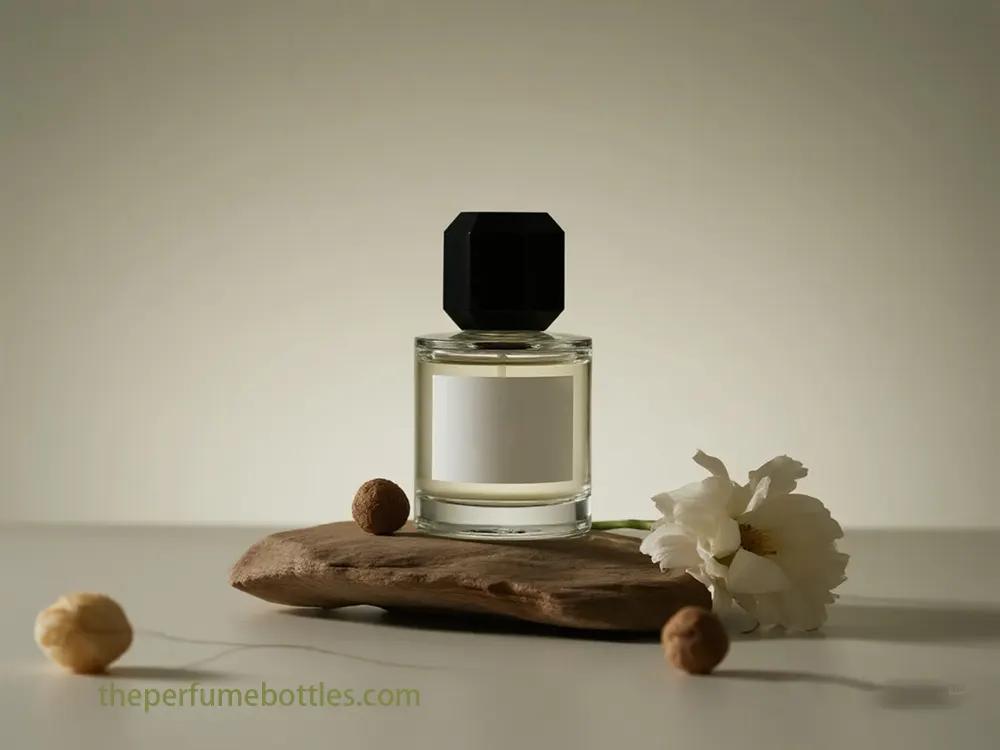
Få gratis prøver
The underlying variability of custom perfume bottle design requires strong model management and adaptable inspection argument, possibly no-cod interfaces for operators to train and deploy AI models for new products for new products for new products.
8. Modern Innovations, Automation, and Sustainability in Custom Bottle Production
- Custom glass perfume bottle industry develops rapidly, inspired by technological progress and growing environmental responsibility. 8.1. Lightweighting Strategies
- Lightweight is an important trend, which provides environment and cost benefits: Techniques:
- UV printing: 100 ml bottle leads to a reduction of raw material, low transport emission/cost, and 50% decrease in the time of production cycle.
It is important to maintain structural integrity and pressure resistance, especially for complex custom designs. The low fragmentation rate during e-commerce transit is an obstacle, requiring successes in production machine technology for wider adoption.
8.2. Increased Utilization of Post-Consumer Recycled (PCR) Glass
- Recycled glass adoption is the cornerstone of permanent production: Including recycled glass (collet) reduces carbon footprints, reduces temperature, reduces energy consumption, and abandons each other. The recycled glass content reduces the 10% increase in CO2 emissions by 5% and energy consumption by 3%.
- Fordele: Recycled Glass provides a specific beauty with microscopic color/textured variations, which is leveraged by luxury brands for discrimination.
- Challenges for Luxury:While beneficial, maintaining extraordinary clarity and color stability for high-end luxury products with much more PCR percentage remains a innovation challenge.
8.3. Energy Efficiency Improvements
Important progress is being made in furnace technology:
- Oxy-Fuel Combustion:Oxy-fuel combustion increases furnace efficiency, reduces emissions, and improves glass quality, causing a decrease in fuel 20–45% fuel and a decrease in 70–90% NOX emissions.
- Waste Heat Recovery: Rejuvenation and regenerative system exhaust heat for pre-heat combustion air/oxygen, increases furnace efficiency by 50–65%. HRA of Fives Group Technologies such as ™ can reduce gas consumption by 10%.
- 8.4. Water Recycling Systems Water conservation is important in the construction of glass:
Closed-Loop Systems:
Closed-loop, zero-discharge water recycling systems crystals clear, high quality gray water, which reduce dependence on fresh water. They include pretense, advanced filtration, chemical treatment and disinfection.
- The grid can reduce water consumption by 85%, the machine can expand life by preventing wearing glass particles, and can reduce environmental pollution.8.5. Alternative Energy Sources
- Omkostningseffektivitet: Electric Melting:
Electric melting has been promised for curbing emissions, large -scale tanks are mainly running on renewable energy, aims to reduce greenhouse gas emissions by 80%.
Hybrid Furnaces:
- Hybrid furnaces combine electrical energy with traditional fuels, 80% of renewable electricity, estimating significant CO2 cuts. Hydrogen and Methanol:
- Hydrogen and methanol are examined as direct combustion fuel, although new burner technology and furnace are required. 8.6. Carbon Capture Technologies
Carbon Capture and Storage (CCS) is being developed for this “difficult-to-decarbonise” sector:
Trial Projects:
- C-capture trial innovative amine-free, companies such as low-cost carbon capture technology to remove CO2 from fluid gas emissions on glass manufacturing sites. 8.7. Circular Economy Models
- The perfume industry adopts circular economy principles: Refillable Bottles:
- Rapidly popular, refilable bottles are designed for longevity, allowing customers to reproduce the aroma at refill stations or through return programs. 100% recycled glass bottles and discovery of biodegradable/compost materials for other packaging components.
8.8. Life Cycle Assessment (LCA) Methodologies
LCA evaluates the environmental impact of glass containers:
- Cradle-to-Cradle LCA: Employs ISO 14040/44 methodology for assessing environmental impact from extraction of raw materials to end-life; “cradle-to-cradle” is the most accurate for glass. Collect data from several furnaces to identify improvement opportunities.
- 9. Conclusion and Future Outlook Custom glass perfume bottle manufacturing demonstrated increasing commitment to craftsmanship, accurate engineering, and innovation and stability. From the initial design concept to the final, excellently decorated Vesseluxe bottle, each stage has managed to give careful luxury and brand identification.
- The industry moves to large-scale adaptation and on-demand production, showing unique identity through color schemes, logo placements, shapes and diverse finishes investing in broad custom cosmetic bottle sets with brands. Stability is a primary consumer driver and innovation catalyst. Glass is ideally deployed, with its 100% recycling, reusable and passive nature. Emphasis has been laid on the adoption of a circular economy model to increase lightweight, increase in PCR glass use, and to reduce waste and loyalty.
Premium aesthetics and experienced packaging will continue to run consumer’s choice, investing heavy in advanced decoration techniques with brands, such as embossing, frosting, laser carvation, two-colored glass, and soft-touch texture for unique sensory experiences. Stability by reducing physical material.
Advanced materials increase the properties of science glass, causing innovations such as low electrical loss, high hardness and ultra-slim flexible glass. The atomic layer deposition (ALD) implements nanometer-ranges that improve hydrolytic resistance and block accurate UV light without compromising transparency. The search in ultrastable glass promises the benefits of future performance.
However, the industry should navigate geo -political and economic factors affecting supply chains. Business disputes, tariffs, regional conflicts, and climate change disrupt extreme weather raw material supply, cause ups and downs in currency, and increase transportation costs. This requires the “global supply chains” to reduce and reduce risks from traditional manufacturing hubs and repay regional partnerships.
The future of custom glass perfume bottle manufacturing is one of the champions, constant innovation by Vesseluxe, where unwavering commitment to state-of-the-art technology, artistic design, and stability is beautiful, functional, responsible and further-thinking to create packaging.
- Luxury Positioning with Essential Oil Glass Bottles for Aromatherapy Brands Elevate aromatherapy brands with essential oil glass bottles. Explore luxury design and sustainable
- Fordele: Discover how Vesseluxe created custom bottle of essential oil balancing UV protection and elegance
- Udfordringer: Custom glass bottles for aromatherapy oils by Vesseluxe—lightweight, durable, and elegant packaging
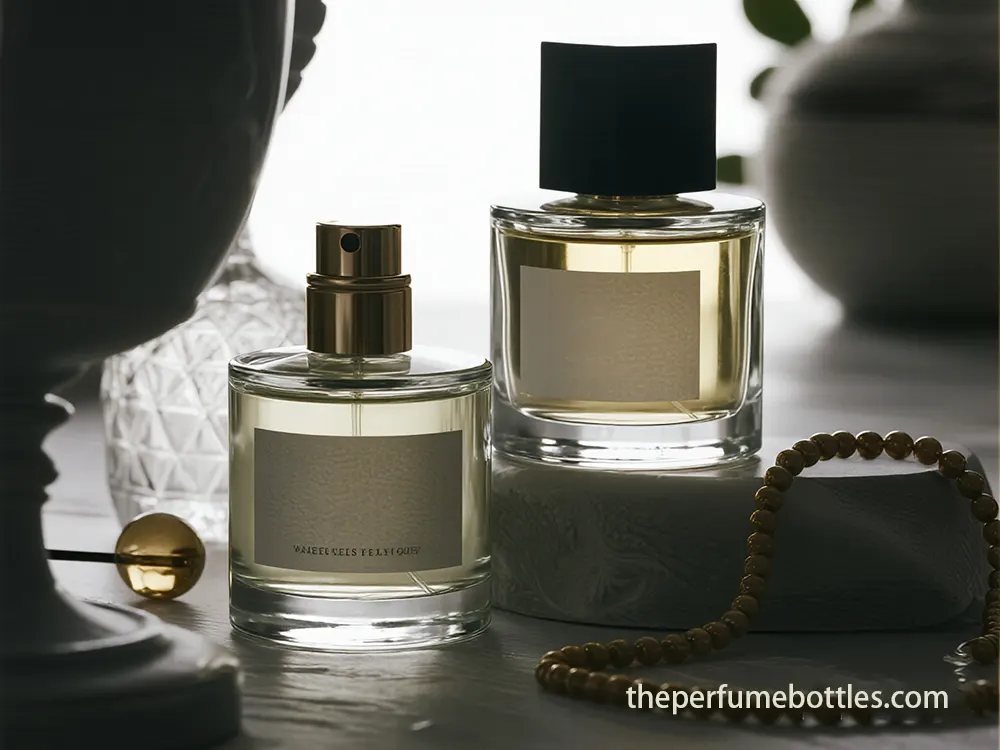
Perfume Bottle Suppliers Adapting to Evolving Consumer Demands: A Strategic Outlook (2025-2032)
Leading perfume bottle supplier adapts to sustainability, personalization, and smart design, shaping
- Miljøforddele: At inkludere genbrugsglas (collet) reducerer CO2-aftryk, reducerer temperatur, reducerer energiforbrug og opgiver hinanden. Indholdet af genbrugsglas reducerer stigningen i CO2-emissioner på 10% med 5% og energiforbruget med 3%.
- Æstetisk appel: Genbrugsglas giver en særlig skønhed med mikroskopiske farve-/strukturvariationer, som udnyttes af luksusmærker til at skelne.
- Udfordringer for luksus: Selv om det er en fordel, er det stadig en innovationsudfordring at opretholde ekstraordinær klarhed og farvestabilitet for luksusprodukter med langt flere PCR-procenter.
8.3. Forbedringer af energieffektiviteten
Der sker store fremskridt inden for ovnteknologi:
- Oxy-fuel-forbrænding:Oxy-fuel-forbrænding øger ovnens effektivitet, reducerer emissioner og forbedrer glaskvaliteten, hvilket medfører et fald i 20-45% brændsel og et fald i 70-90% NOX-emissioner.
- Genvinding af spildvarme: Foryngelse og regenerering af systemets udstødningsvarme til forvarmning af forbrændingsluft/oxygen øger ovnens effektivitet med 50-65%. HRA af Fives Group-teknologier som ™ kan reducere gasforbruget med 10%.
8.4. Systemer til genbrug af vand
Det er vigtigt at spare på vandet, når man bygger glas:
- Systemer med lukket kredsløb: Vandgenbrugssystemer med lukket kredsløb og nul udledning udkrystalliserer klart gråt vand af høj kvalitet, som reducerer afhængigheden af ferskvand. De omfatter forbehandling, avanceret filtrering, kemisk behandling og desinfektion.
- Fordele: Gitteret kan reducere vandforbruget med 85%, maskinen kan forlænge levetiden ved at forhindre slidte glaspartikler og kan reducere miljøforureningen.
8.5. Alternative energikilder
Industrien opdager muligheder for fossile brændstoffer:
- Elektrisk smeltning: Elektrisk smeltning er blevet lovet for at begrænse udledningen, store tanke kører hovedsageligt på vedvarende energi og har til formål at reducere udledningen af drivhusgasser med 80%.
- Hybridovne: Hybridovne kombinerer elektrisk energi med traditionelle brændstoffer, 80% vedvarende elektricitet, hvilket giver betydelige CO2-besparelser.
- Brint og metanol:Brint og metanol undersøges som direkte forbrændingsbrændstof, men det kræver ny brænderteknologi og nye ovne.
8.6. Teknologier til opsamling af kulstof
Carbon Capture and Storage (CCS) er ved at blive udviklet til denne sektor, som er svær at afkarbonisere:
- Forsøgsprojekter: C-capture afprøver innovative aminfrie virksomheder som f.eks. billig kulstoffangstteknologi til at fjerne CO2 fra flydende gasemissioner på glasproduktionssteder.
8.7. Modeller for cirkulær økonomi
Parfumeindustrien anvender principper for cirkulær økonomi:
- Genopfyldelige flasker: De hurtigt populære, genanvendelige flasker er designet til at holde længe, så kunderne kan genskabe aromaen ved genopfyldningsstationer eller gennem returprogrammer.
- Genbrugsindhold: 100% genbrugsglasflasker og opdagelse af bionedbrydelige/kompostmaterialer til andre emballagekomponenter.
8.8. Metoder til livscyklusvurdering (LCA)
LCA evaluerer miljøpåvirkningen fra glasbeholdere:
- Cradle-to-Cradle LCA: Anvender ISO 14040/44-metoden til vurdering af miljøpåvirkning fra udvinding af råmaterialer til slutbrug; "vugge-til-vugge" er den mest nøjagtige for glas. Indsamler data fra flere ovne for at identificere forbedringsmuligheder.
9. Konklusion og fremtidsudsigter
Produktionen af parfumeflasker i specialglas har vist et stigende engagement i håndværk, præcis teknik, innovation og stabilitet. Fra det første designkoncept til den endelige, fremragende dekorerede Vesseluxe-flakon har hvert trin formået at give omhyggelig luksus og brandidentifikation.
Branchen går over til tilpasning i stor skala og on-demand-produktion og viser unik identitet gennem farveskemaer, logoplaceringer, former og forskellige overflader ved at investere i brede, tilpassede kosmetikflaskesæt med brands.
Stabilitet er en primær forbrugerdriver og innovationskatalysator. Glas er ideelt med sin 100%-genanvendelse, genanvendelige og passive natur. Der er lagt vægt på indførelsen af en cirkulær økonomimodel for at øge letvægten, øge brugen af PCR-glas og reducere spild og loyalitet.
Førsteklasses æstetik og erfaren emballage vil fortsat være forbrugernes valg, og der investeres kraftigt i avancerede dekorationsteknikker med mærker, såsom prægning, frosting, laserudskæring, tofarvet glas og soft-touch-tekstur for unikke sanseoplevelser. Stabilitet ved at reducere det fysiske materiale.
Avancerede materialer øger egenskaberne ved videnskabeligt glas og skaber innovationer som lavt elektrisk tab, høj hårdhed og ultratyndt, fleksibelt glas. Den atomare lagudfældning (ALD) implementerer nanometerområder, der forbedrer hydrolytisk modstand og blokerer nøjagtigt UV-lys uden at gå på kompromis med gennemsigtigheden. Søgningen efter ultrastabilt glas lover fordelene ved fremtidig ydeevne.
Branchen skal dog navigere i geopolitiske og økonomiske faktorer, der påvirker forsyningskæderne. Forretningstvister, toldsatser, regionale konflikter og klimaforandringer forstyrrer forsyningen af råmaterialer i ekstremt vejr, forårsager op- og nedture i valutaen og øger transportomkostningerne. Det kræver, at de "globale forsyningskæder" reducerer og mindsker risici fra traditionelle produktionsknudepunkter og genskaber regionale partnerskaber.
Fremtiden for fremstilling af parfumeflasker af specialglas er en af mestrene, konstant innovation fra Vesseluxe, hvor urokkelig forpligtelse til avanceret teknologi, kunstnerisk design og stabilitet er smuk, funktionel, ansvarlig og videre tænkende for at skabe emballage.
Kommentarer
Produktkategorier
Varme salgsflasker
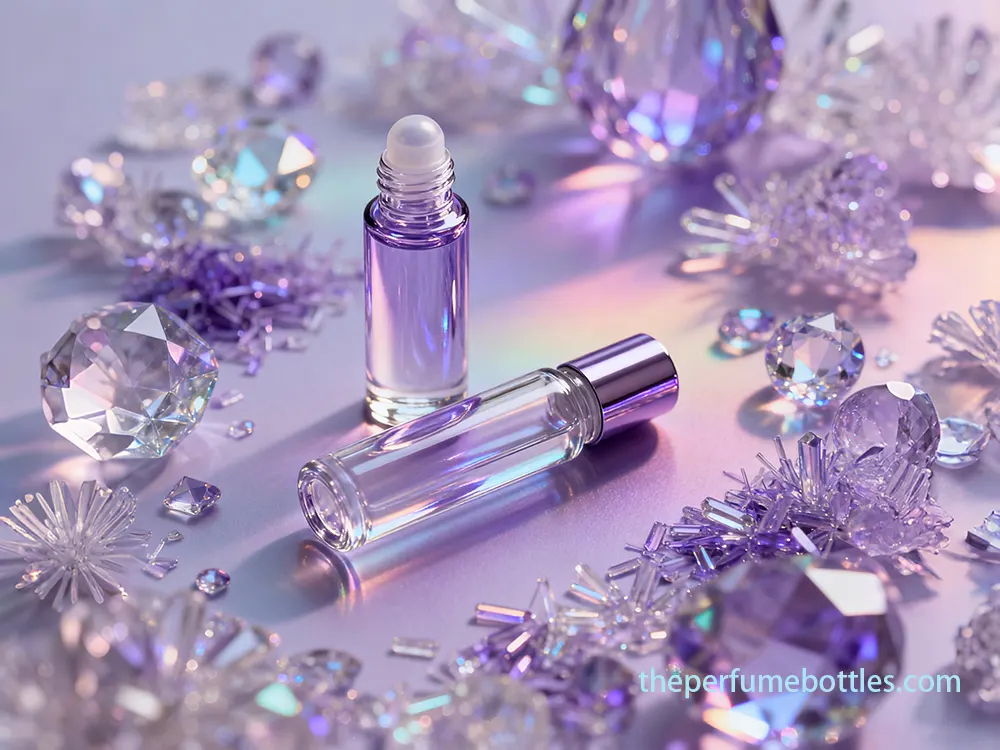
Casestudie: Fremstilling af brugerdefinerede 5 ml glasrulleflasker til et græsk skønhedsmærke
Vessleluxe indgik et partnerskab med et græsk skønhedsmærke for at fremstille præcise 5 ml glasrulleflasker, der løser præcision og
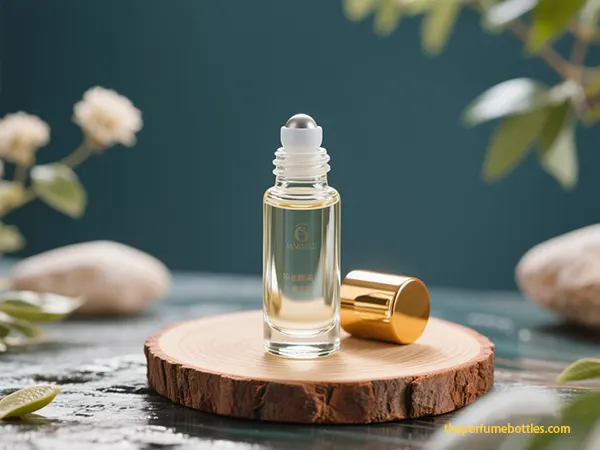
Hvordan finder man glasrulleflasker i løs vægt?
Køb rullekugleflasker i glas i store mængder til fabrikspriser. Engroslevering, muligheder for private label, gratis prøver til dit brand og hurtig levering.
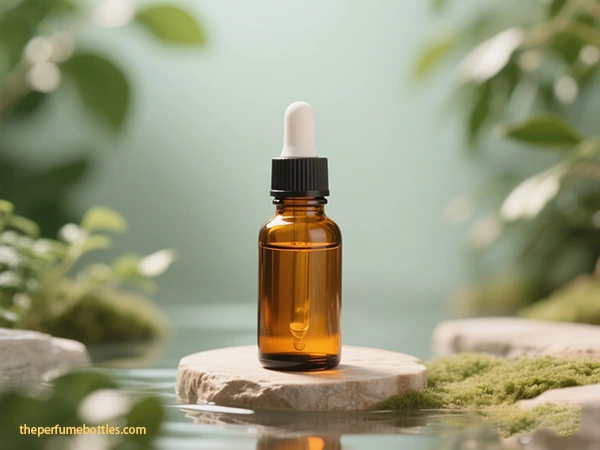
Hvor kan man købe ravfarvede flasker med pipette engros: En komplet B2B-guide
Leder du efter ravfarvede flasker med pipette i store mængder? Få konkurrencedygtige priser, gratis prøver og muligheder for tilpasning af din brandemballage.
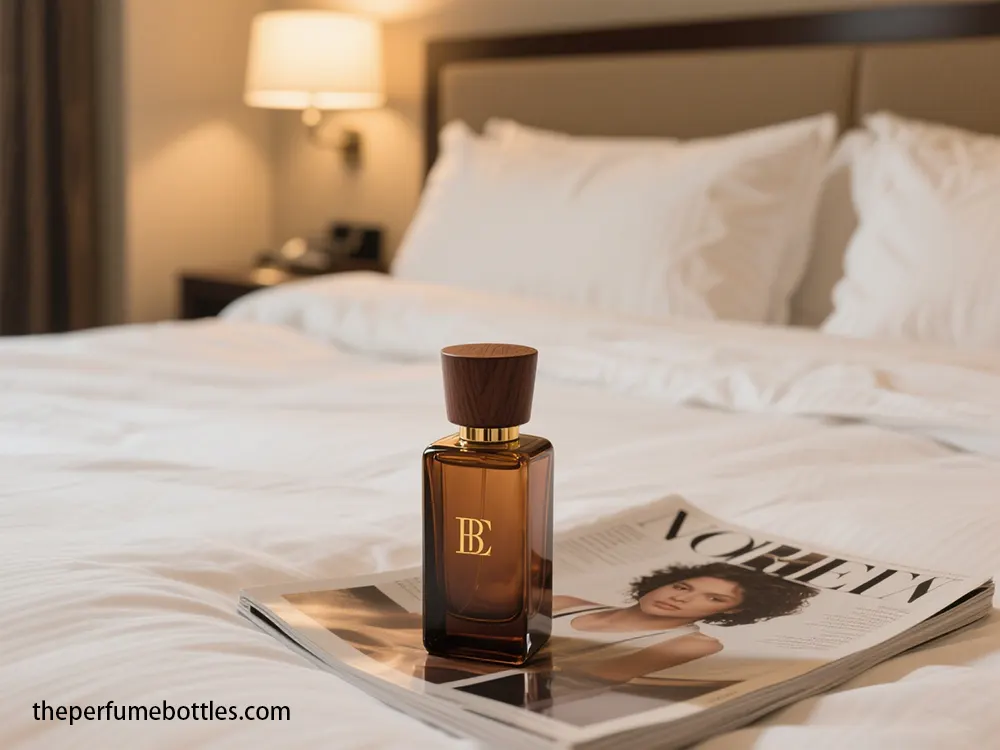
Komplet guide til brug af mini-parfumeflasker uden spray
Lær at åbne, udtrække, påføre og lære at bruge mini-parfumeflasker uden spray. Tips til stænk, prop, krympede flasker og overførsel til rollerball-flasker.
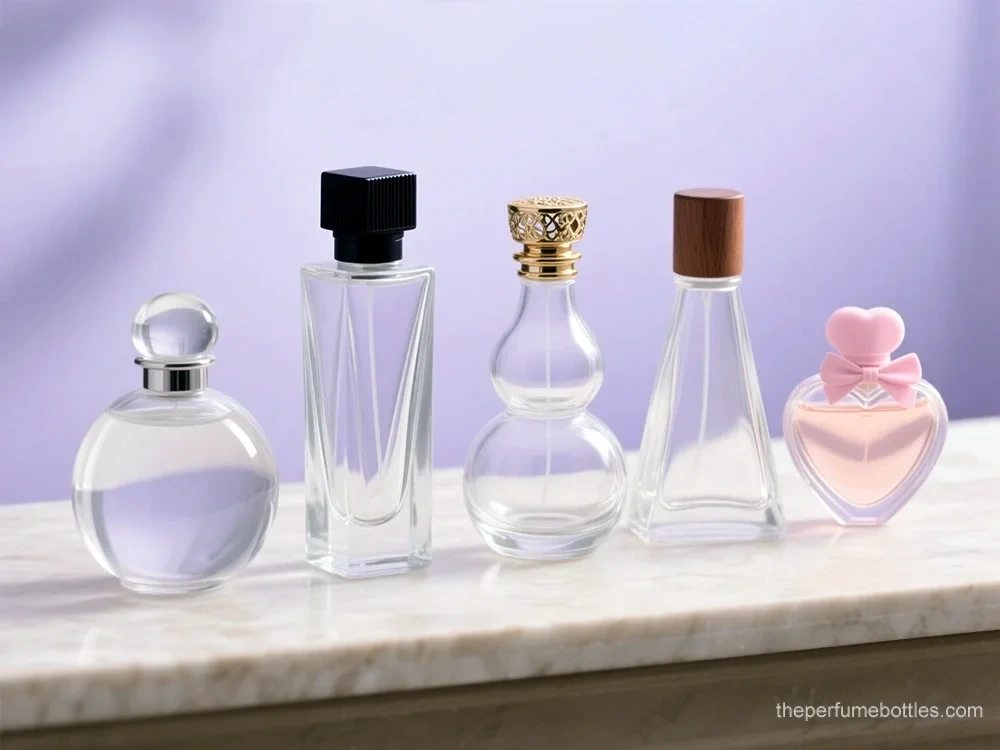
Top 5 producenter af parfumeflasker i glas i Kina
Opdag de førende producenter af parfumeflasker i Kina, der tilbyder brugerdefinerede designs, miljøvenlige materialer og innovative emballageløsninger til globale skønhedsmærker.
- +86 186 5178 1159
- [email protected]
- Man-søn 07:00-21:00
Tags
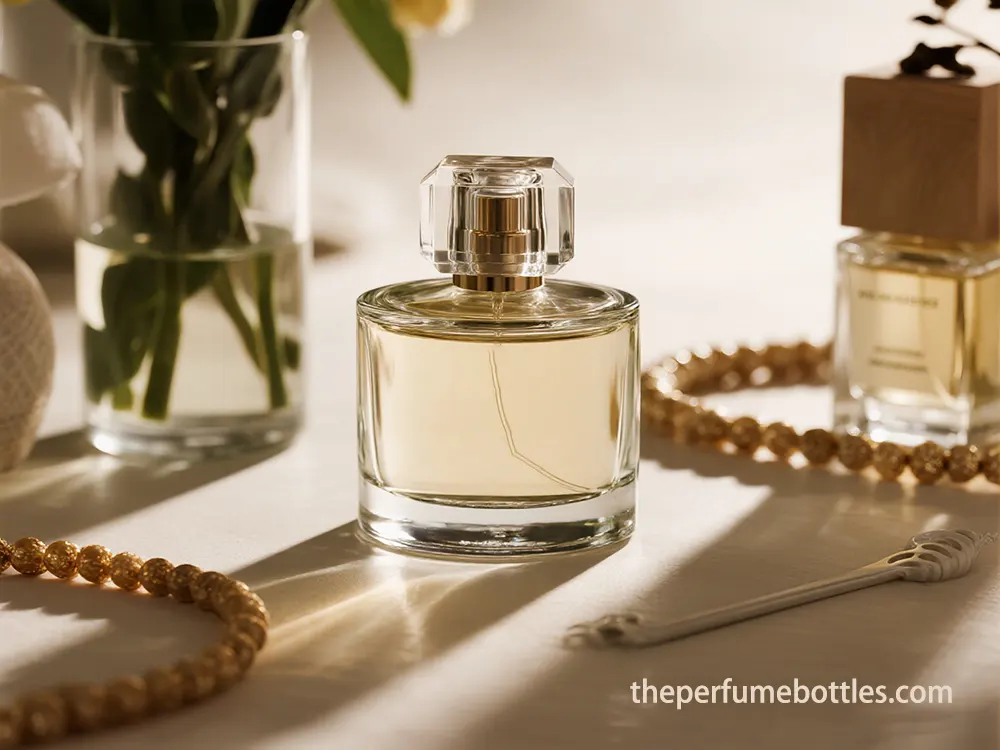
En strategisk ramme for valg af en leverandør af parfumeflasker i glas
Find din strategiske leverandør af parfumeflasker i glas med denne guide, der viser, hvordan den rette partner øger hastigheden og den skalerbare vækst for parfumemærker.
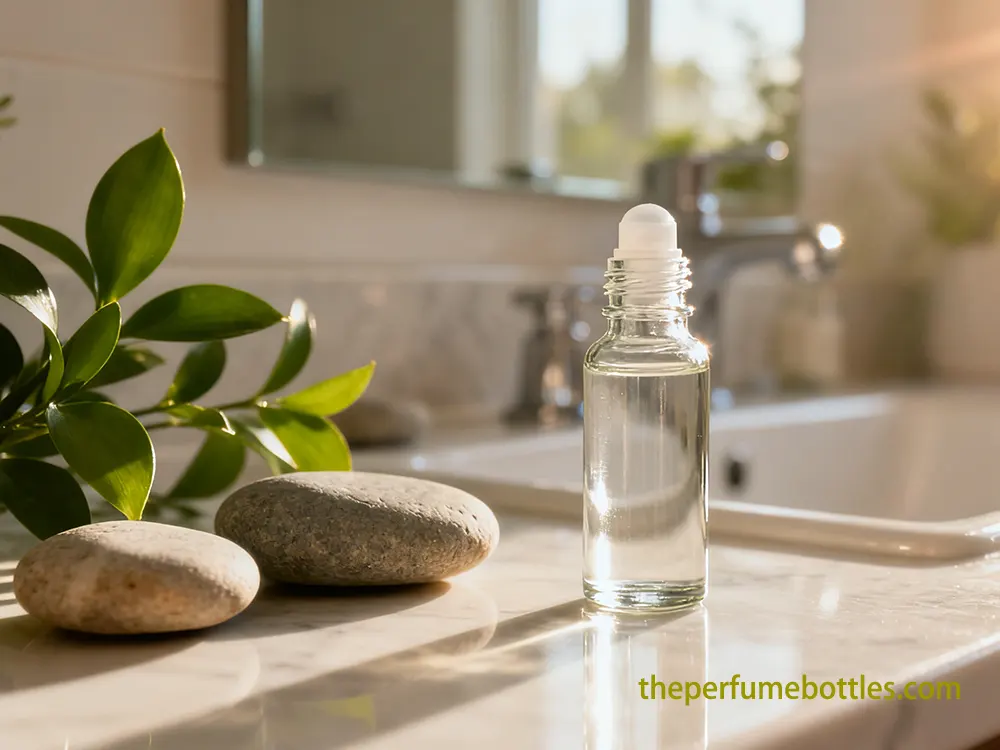
Casestudie: Vores fabrik til glasrulleflasker leverede emballage til et mærke af æteriske olier
En casestudie om, hvordan en fabrik til glasrulleflasker løste problemer med rullestabilitet og holdbarhed med tynde halse for at levere pålidelige, lækagefri premiumflasker.
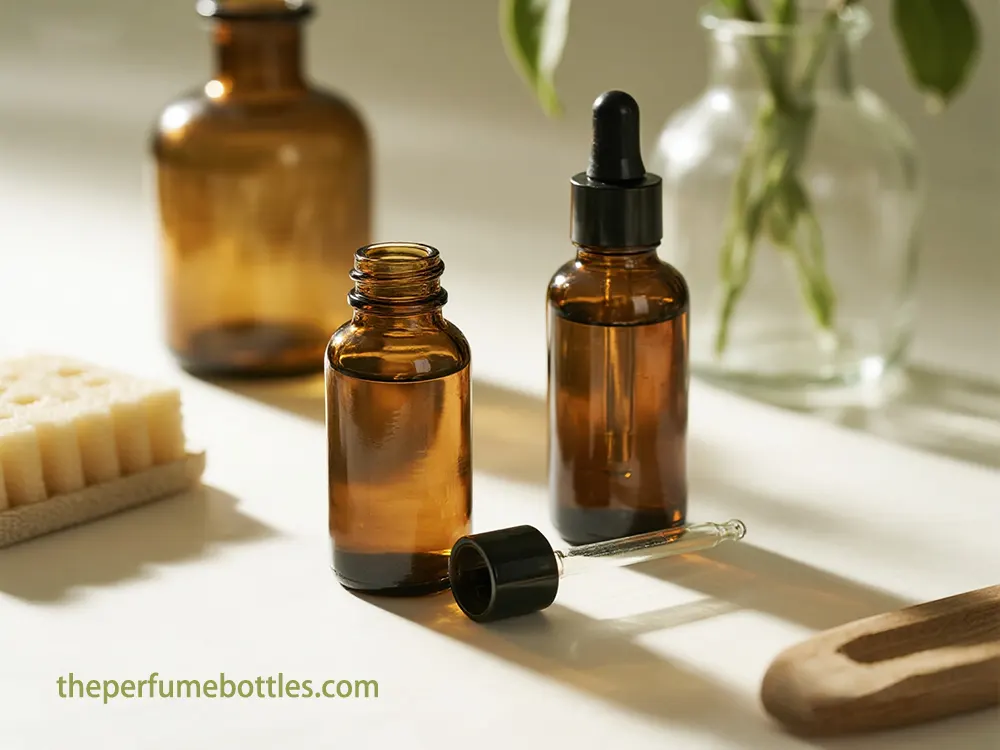
Casestudie: Hvordan en fabrik til fremstilling af glasdråberflasker hjalp et mærke med helbredende olier
En casestudie af, hvordan en fabrik til glasdråbeflasker hjalp et portugisisk mærke med helbredende olier med at opnå præcis dosering, forbedret greb og førsteklasses, brugerdefineret emballage.
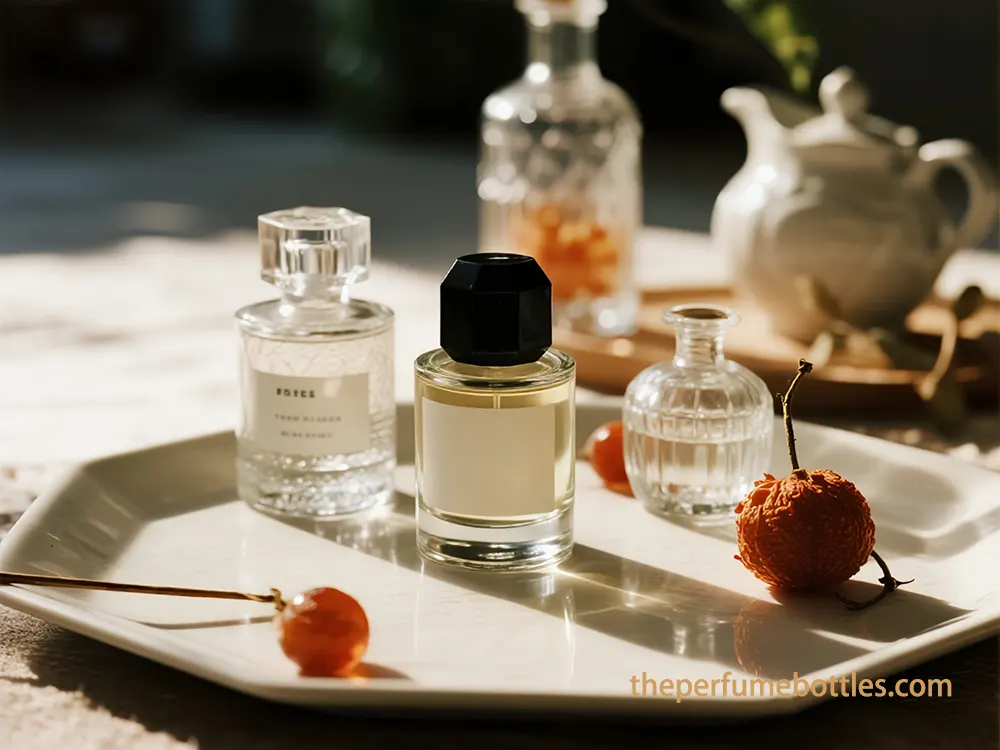
En dufts rejse fra en fabrik til glasparfumeflasker og videre
Opdag hvordan en førende fabrik for glasparfumeflasker, avanceret kemi og global logistik


